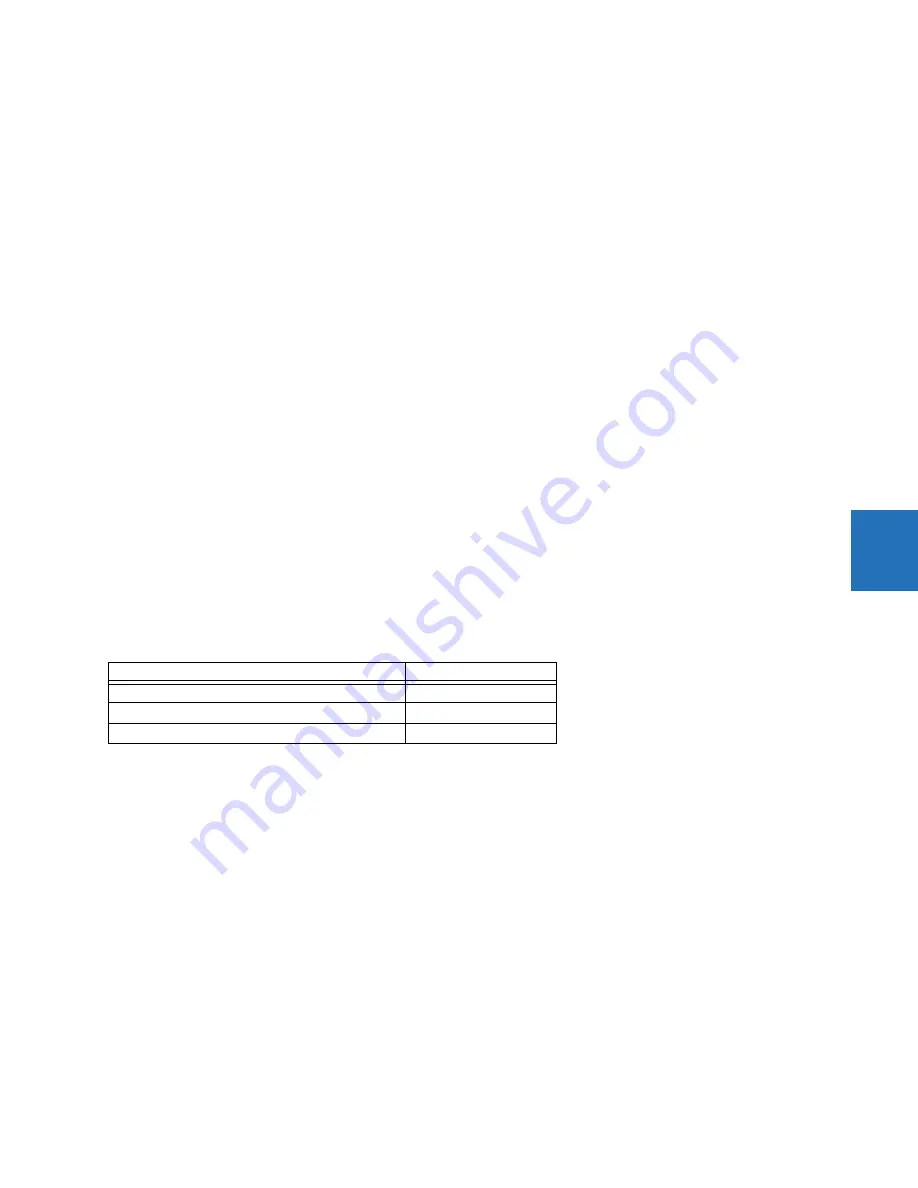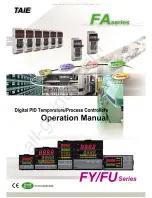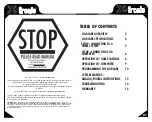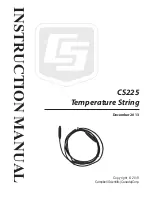
CHAPTER 5: SETTINGS
OVERVIEW
L30 LINE CURRENT DIFFERENTIAL SYSTEM – INSTRUCTION MANUAL
5-7
5
applied internally via configuration settings. Up to four currents can be brought into the L30; current summation and CT
ratio matching is performed internally. A major advantage of internal summation is that individual currents are available to
the protection device (for example, as additional information to apply a restraint current properly, or to allow the provision
of additional features that operate on the individual currents, such as breaker failure). Given the flexibility of this approach,
it becomes necessary to add configuration settings to the platform to allow the user to select which sets of CT inputs are
added to form the net current into the protected device. The internal grouping of current and voltage signals forms an
internal source. This source can be assigned a specific name and becomes available to protection and metering elements
in the relay. Individual names can be given to each source to identify them for later use. For example, in the scheme
shown, three different sources are be configured as inputs for separate elements:
•
Source 1 — CT1 current, for the breaker failure 1 element and first current source for the line differential element
•
Source 2 — CT2 current, for breaker failure 2 element and second current source for the line differential element
•
Source 3 — The sum of the CT1 and CT2 currents for the distance function
In addition, two separate synchrocheck elements can be programmed to check synchronization between line voltage and
two different bus voltages (SRC3–SRC1 and SRC3–SRC2).
5.2.2.2 CT/VT module configuration
CT and voltage transformer (VT) input channels are contained in CT/VT modules. The type of input channel can be phase/
neutral/other voltage, phase/ground current, or sensitive ground current. The CT/VT modules calculate total waveform
RMS levels, fundamental frequency phasors, symmetrical components, and harmonics for voltage or current, as allowed
by the hardware in each channel. These modules can calculate other parameters as directed by the CPU module.
A CT/VT module contains up to eight input channels, numbered 1 through 8. The channel numbering corresponds to the
module terminal numbering 1 through 8 and is arranged as follows. Channels 1, 2, 3, and 4 are always provided as a group,
hereafter called a “bank,” and all four are either current or voltage, as are channels 5, 6, 7, and 8. Channels 1, 2, 3 and 5, 6,
7 are arranged as phase A, B, and C respectively. Channels 4 and 8 are either another current or voltage.
Banks are ordered sequentially from the block of lower-numbered channels to the block of higher-numbered channels,
and from the CT/VT module with the lowest slot position letter to the module with the highest slot position letter, as follows.
The UR platform allows for a maximum of six sets of three-phase voltages and six sets of three-phase currents. The result
of these restrictions leads to the maximum number of CT/VT modules in a chassis to three. The maximum number of
sources is six. A summary of CT/VT module configurations is as follows.
5.2.2.3 CT/VT input channel configuration
Upon relay startup, configuration settings for every bank of current or voltage input channels in the relay are generated
automatically from the order code. Within each bank, a channel identification label is assigned automatically to each bank
of channels in a given product. The
bank
naming convention is based on the physical location of the channels, required by
the user to know how to connect the relay to external circuits. Bank identification consists of the letter designation of the
slot in which the CT/VT module is mounted as the first character, followed by numbers indicating the channel, either 1 or 5.
See the HardFiber instruction manual for designations of HardFiber voltage and current banks.
For three-phase channel sets, the number of the lowest numbered channel identifies the set. For example, F1 represents
the three-phase channel set of F1/F2/F3, where F is the slot letter and 1 is the first channel of the three channels.
Upon startup, the CPU configures the settings required to characterize the current and voltage inputs, and it displays them
in the appropriate section in the sequence of the banks (as described earlier) as follows for a maximum configuration: F1,
F5, L1, L5, S1, and S5.
Item
Maximum number
CT/VT Module
1
CT Bank (3 phase channels, 1 ground channel)
2
VT Bank (3 phase channels, 1 auxiliary channel)
1
Содержание L30
Страница 10: ...x L30 LINE CURRENT DIFFERENTIAL SYSTEM INSTRUCTION MANUAL TABLE OF CONTENTS ...
Страница 14: ...1 4 L30 LINE CURRENT DIFFERENTIAL SYSTEM INSTRUCTION MANUAL FOR FURTHER ASSISTANCE CHAPTER 1 INTRODUCTION 1 ...
Страница 126: ...3 68 L30 LINE CURRENT DIFFERENTIAL SYSTEM INSTRUCTION MANUAL CONNECT TO D400 GATEWAY CHAPTER 3 INSTALLATION 3 ...
Страница 214: ...4 88 L30 LINE CURRENT DIFFERENTIAL SYSTEM INSTRUCTION MANUAL FLEXLOGIC DESIGN USING ENGINEER CHAPTER 4 INTERFACES 4 ...
Страница 582: ...7 16 L30 LINE CURRENT DIFFERENTIAL SYSTEM INSTRUCTION MANUAL TARGETS MENU CHAPTER 7 COMMANDS AND TARGETS 7 ...
Страница 598: ...9 6 L30 LINE CURRENT DIFFERENTIAL SYSTEM INSTRUCTION MANUAL TESTING CHAPTER 9 COMMISSIONING 9 ...
Страница 622: ...10 24 L30 LINE CURRENT DIFFERENTIAL SYSTEM INSTRUCTION MANUAL FAULT LOCATOR CHAPTER 10 THEORY OF OPERATION 10 ...
Страница 670: ...A 18 L30 LINE CURRENT DIFFERENTIAL SYSTEM INSTRUCTION MANUAL FLEXANALOG ITEMS APPENDIX A FLEXANALOG OPERANDS A ...
Страница 678: ...C 6 L30 LINE CURRENT DIFFERENTIAL SYSTEM INSTRUCTION MANUAL COMMAND LINE INTERFACE APPENDIX C COMMAND LINE INTERFACE C ...
Страница 682: ...D 4 L30 LINE CURRENT DIFFERENTIAL SYSTEM INSTRUCTION MANUAL REVISION HISTORY APPENDIX D MISCELLANEOUS D ...
Страница 686: ...iv L30 LINE CURRENT DIFFERENTIAL SYSTEM INSTRUCTION MANUAL ABBREVIATIONS ...
















































